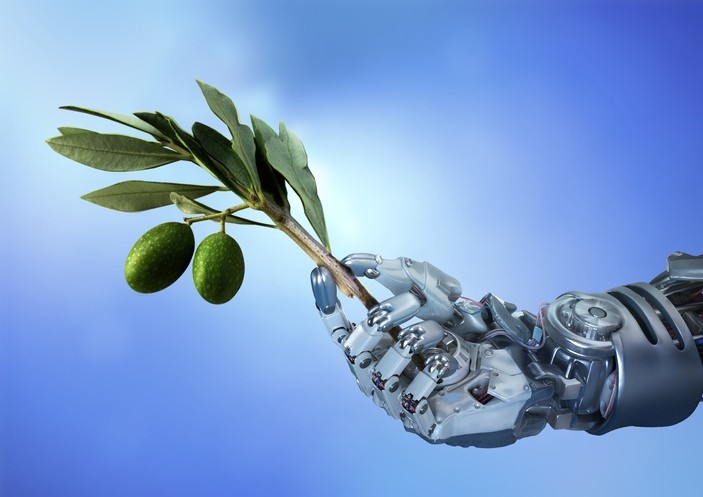The agrifood tech sector hopes to respond to some very profound problems affecting the industry from sustainability, cutting carbon emissions, reducing waste and contributing to public health.
But interest rate rises and market volatility has hit risky investments across the board. Many start-ups won’t survive the current economic situation, warns Fiona Choppe-Magal, an investment banker at Israel-based Cukierman Investment House.
The situation, however, also presents a significant opportunity for start-ups with “exceptional and distinct technologies cultivated within the Agrifood domain”, she told FoodNavigator. As such, she expects to see a spike in mergers and acquisitions. And there are more crumbs of comfort for start-ups in Europe. In 2022, European Agrifoodtech investment fell by 46% to $5.1 billion, aligning with a global funding decrease of 44%. Despite this, the region still marked a substantial rise compared to 2020, when European start-ups in this field raised $3.3 billion, according to AgFunder’s 2023 report. North America and Europe are also moving in different directions in the alternative protein sector. The Good Food Institute recorded a 63% decrease in funding in North America, while it increased by 24% in Europe in 2022.
Find the right partner
Choppe-Magal specialises in building collaborations between the fertile Israeli start-up ecosystem and international companies. Her first tip, therefore, is to find the right partner.
Young start-ups in the food tech sector can be particularly keen to protect intellectual property (IP). Bringing manufacturing processes in-house might therefore seem like an attractive option. But this is not as cost-effective as hiring a contractor, which allows more scope to produce in large volumes. Finding the right partner can foster numerous benefits. Food industry supply chains are notoriously long and complex, for example. “Methods and workflows at so many levels are required that startups cannot succeed alone and need to find the right partners within this industry,” said Choppe-Magal.
Neither is it enough for investors to just throw cash at start-ups. “It’s not enough to assist such start-ups in fundraising – we also need to find the perfect partner for them so they can grow or position themselves for merger or acquisition opportunities,” she told us.
“Such a partner could be a major food corporation like Nestlé or Strauss, a restaurant chain, or catering companies producing millions of meals daily, a supermarket chain, or a multinational agricultural corporation supplying fruits and vegetables, or one of the largest dairy product manufacturers in the world.”

Connecting to other industries and collaboration
The onus is on food tech players to explore cross-sector collaborations. Life sciences and food tech have much in common, for instance, with similar processes involving deep innovation, IP, tech platforms, and expertise in the pharmaceutical field. Specialists from the life sciences or talents from major pharmaceutical companies can therefore greatly assist food tech start-ups in advancing their research.
“It is essential to attract talent and knowledge from the life sciences industry into the world of food tech,” said Choppe-Magal. Additionally, food tech companies that expand their portfolios to investors or funds in the life sciences domain can enjoy excellent opportunities.
Examples are plentiful among those companies to have been supported by Cukierman Investment House. Israeli company Curalife, for example, in collaboration with life science specialists, developed a range of natural nutritional supplements designed to help the body cope with the chronic effects of diseases like diabetes. Another, Entoprotech, extracts highly nutritious materials from the larvae of the black soldier fly, which can serve as food for pets, livestock, and be used in the pharmaceutical and cosmetic industries.
Meanwhile, we have barely scratched the surface of artificial intelligence. “It’s incredible to see how the use of AI algorithms accelerates research in food tech laboratories,” observed Choppe-Magal. From advanced developments in fungal fermentation (mycelium), bioreactors, cellular agriculture, and the creation of entirely new personalised food ingredients at the molecular and peptide level – AI is truly ‘revolutionizing food tech research’.
Connection with the world of chefs and restaurants
Amid such rapidly accelerating technology, it can be easy to forget that food tech products ultimately need consumer acceptance. It is highly recommended for start-ups to emphasize the commercial aspect and the go-to-market strategy right from the beginning of their journey. That’s why it’s crucial to also stay constantly connected with the food industry, restaurants, chefs, influencers, and content creators on social networks, as they understand and know customers best, according to the investor. “This is the best way to approach and engage with consumers, receive feedback, and understand their taste preferences and product expectations in terms of flavour and texture. Remember, technology won’t drive the sales of your product, but the user experience will. Chefs are the true ambassadors of the food world, and they can greatly influence the success of a product.”
Focus on bottlenecks and hot trends
Everyone – innovators and investors alike – should not stray from watching fast-moving industry trends too. “Innovations should concentrate on challenges and bottlenecks that have not yet received a satisfactory solution, both on the consumer side and the industry side,” explained the investor.
A growing group of start-ups, for example, are leveraging the potential of fermentation technology to create new ingredients, including proteins. To do this, they need an entire infrastructure, including not just fermentation facilities but also a team equipped for the task and innovative working methods that need to be invented and integrated. “Happily, we can see companies that are already investing in such infrastructure,” noted Choppe-Magal.
Other trends to watch include food as medicine, personalized nutrition based on individual health data and needs, food waste reduction solutions and upcycling (upgrading) of food waste. The ‘clean label’ movement is in constant evolution too, where consumer trust relies on transparency and the ability to know how clean and safe the offered food is, its origin, supply chain, and more.

Exercise patience…
Innovation versus regulation is a familiar trigger point in the food tech industry. EU novel food dossiers, for example, are infamously costly and time consuming. According to Choppe-Magal, regulation in the food industry is becoming increasingly stringent because it involves a new world where the regulator is required to allow things that have never been allowed before. “Patience is the key here, even though entrepreneurs usually prefer, and rightfully so, rapid progress,” she advised. “Hence, it is important to find investors who are familiar with the field, aware of the time things take, and willing to support throughout the process.”
… and of course, be persistent
Another hurdle for those with agrifoodtech solutions – say, robotics and automation in farming – might be high CAPEX costs and inadequate technical skills for those who will use them. Be steadfast is Choppe-Magal’s advice. “While the impact and influence of the agrifoodtech industry are growing rapidly, we must remember those are still relatively young industries,” she noted. “Creating a new industry obviously requires substantial capital investments and time to overcome those issues you are mentioning. Indeed, certain technologies demand advanced technical skills to effectively scale up food tech solutions and integrate them into the food supply chain, whether it’s within agricultural fields, packing houses, supermarkets, or restaurants.”
Have hope that once this paradigm shift alters established work practices it necessitates dedicated efforts in training and technology implementation. “We observe successful companies and industry leaders willing to commit resources—financial, training, and temporal—to adopt these technologies. Why? Because they comprehend that such endeavors will enhance operational efficiency, cultivate new revenue streams, and augment production capacity. When technologies are adeptly deployed and yield success, they offer a substantial competitive edge by providing consumers with superior products or services.”

‘We are steadily advancing’
Take ‘Solutions as a Service’ SolaaS as an example. An innovative use of cloud computing, this involves the delivery of an entire IT solution rather than its individual components. It is also being used as an elegant solution to reduce food waste at the supermarket level. Choppe-Magal said we can increasingly see the world of data analytics and robotic process automation (RPA) being successfully employed to monitor equipment, track inventory, and optimize supply chain operations. “The improvement of the whole technology world will improve and ease the implementation of food tech technologies in the huge food industry.”
Many also like to knock plant-based foods over fears these are overly processed and unhealthy. But Cukierman Investment House has identified a Generation 2.0 of plant-based products to have emerged in the past year. “These taste better, are made of fewer ingredients, and have simplified cooking methods compared to the earlier Generation 1.0,” said Choppe-Magal. Take the company Kinoko as an example. This Israeli start-up is providing new fermentation products based on fungal mycelium that grows on legumes and grains. The company understood the issues of the industry and is creating something different from what we see today in the space, the investor believes. “Kinoko is low on capex, easy to scale using simple equipment and already existing infrastructure and minimal electricity and water usage.”
Collaboration really is key
It is clear therefore the industry is undergoing rapid transformation, with start-ups working diligently to address challenges like scaling-up complexities, cost reduction in production, and minimizing the technical expertise required for technology adoption. To draw a parallel between the food tech and high-tech sectors, consider the evolution of computers from the 1980s to today’s remarkable smartphones and computers, said Choppe-Magal. Computers were used only by high skilled professional technicians. Today everyone is using them. It took some years to get to where are today, but the trajectory is clear: “we are steadily advancing”.
The food tech industry boasts the potential to do ‘much good in the world’, she concluded. “But for all this good to happen, all the players in the ecosystem – the food industry, researchers, academia, governments, regulators, food networks, media, consumers themselves, and start-ups – need to work together, in a coordinated manner, to create systemic and widespread change. It’s not simple, but definitely possible, and beyond that, it’s required.”